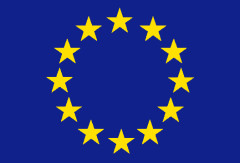Improving the understanding of poverty and social exclusion in Europe

Putting people first in Europe’s post-COVID-19 recovery is at the heart of the European Pillar of Social Rights Action Plan, proposed by the European Commission in March 2021 and subsequently endorsed by the 27 European Union (EU) Member States. The backbone of this commitment is the EU target to reduce, during this decade, the number of people at risk of poverty or social exclusion by at least 15 million (including at least five million children), together with the EU targets on employment and on skills. The Recovery and Resilience Facility, the key instrument of ‘NextGenerationEU’, aims to help mitigate the socio-economic impact of the pandemic. It will help Member States make their economies and societies greener, more digital and more resilient. Better understanding of poverty and social exclusion in Europe has become even more important in this context and is essential for close monitoring of Member States’ progress towards the agreed EU targets. A more in-depth understanding is also needed to guide the necessary policy reforms and evaluate the effectiveness of the resources invested in achieving the ambitious objectives of the Action Plan. Crucial to all of this is the reliability of the available data and the development of accurate and robust indicators, such as those included in the scoreboard for the European Pillar for Social Rights. The quality of the analyses based on these data is also of key importance for understanding the complex and dynamic issues underlying poverty and social exclusion. The Eurostat publication Improving the understanding of poverty and social exclusion in Europe provides in-depth analyses of the EU Statistics on Income and Living Conditions (EU-SILC). It aims to deepen our knowledge of the determinants and dynamics of income and living conditions, to suggest robust policy-relevant indicators and to examine the strengths and weaknesses of this dataset. It is the outcome of an EU-funded network of statisticians and social scientists who form a partnership that has extensive experience in the production and analysis of the EU-SILC data. The present volume is intended not only for policy-makers, researchers and statisticians, but also, more broadly, for all those concerned with ensuring that economic and social progress in Europe go hand in hand.
